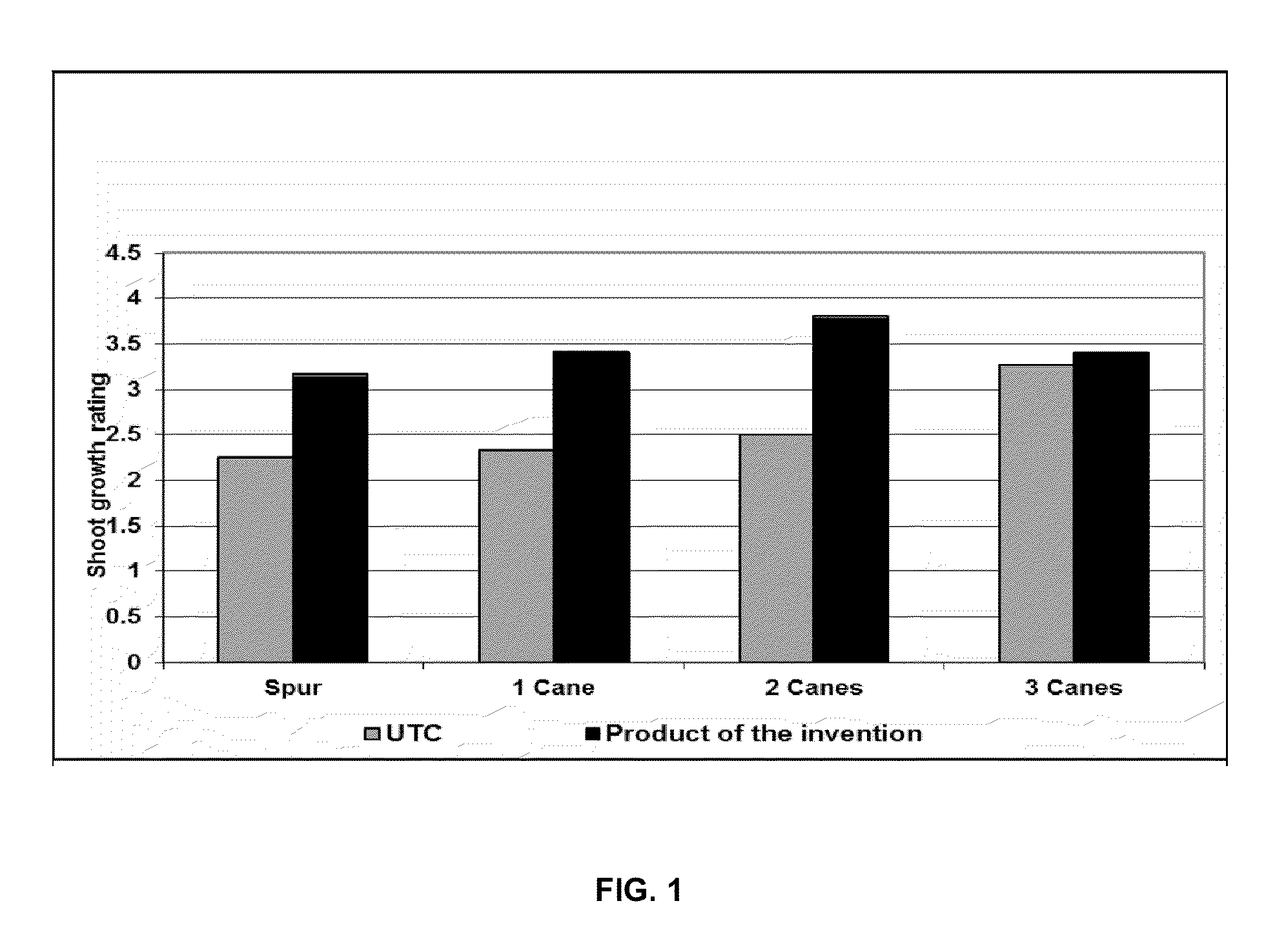Compositions and methods for the treatment of diseases on plants
a technology for plants and diseases, applied in the field of root rot treatment, can solve the problems of difficult root getting, no effective treatment, and usually lethal, and achieve the effect of reducing or at least controlling root ro
- Summary
- Abstract
- Description
- Claims
- Application Information
AI Technical Summary
Benefits of technology
Problems solved by technology
Method used
Image
Examples
example
Example 1
Effect of Product of the Invention Applied to Pinot Noir Impacted by Armillaria Root Rot
[0039]The method of treatment is illustrated by applying the product to a severely affected wine grape vineyard resulting in a turn-around in the growth of the previously declining vines.
[0040]Materials and Methods:
[0041]An existing Merlot vineyard that was re-budded to Pinot Noir 2007 was used for the trial plot. Armillaria root rot had attacked many of the vines. The Armillaria starts to cover the roots and over time the vines become weaker and weaker and eventually die. Of the 2.5 acres there were over 200 dead vines and another 100 that were very weak. As the Armillaria takes over more of the root system, the vines grow slower and shut down earlier in the season. Leaves will thus turn red also early in the season.
[0042]The method of treatment included dripping the product onto the ground around the affected vines through an irrigation system at 10 litres per hectare during spring and...
PUM
 Login to View More
Login to View More Abstract
Description
Claims
Application Information
 Login to View More
Login to View More - R&D
- Intellectual Property
- Life Sciences
- Materials
- Tech Scout
- Unparalleled Data Quality
- Higher Quality Content
- 60% Fewer Hallucinations
Browse by: Latest US Patents, China's latest patents, Technical Efficacy Thesaurus, Application Domain, Technology Topic, Popular Technical Reports.
© 2025 PatSnap. All rights reserved.Legal|Privacy policy|Modern Slavery Act Transparency Statement|Sitemap|About US| Contact US: help@patsnap.com

